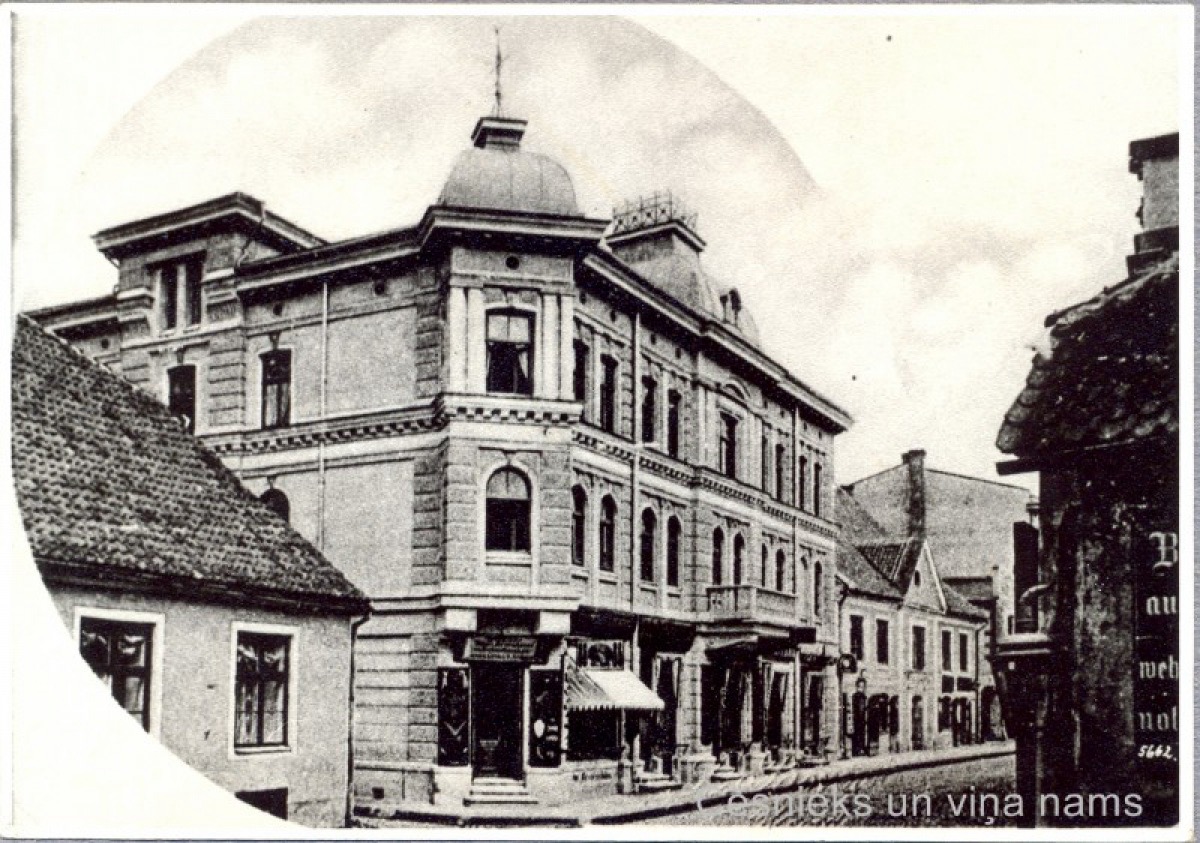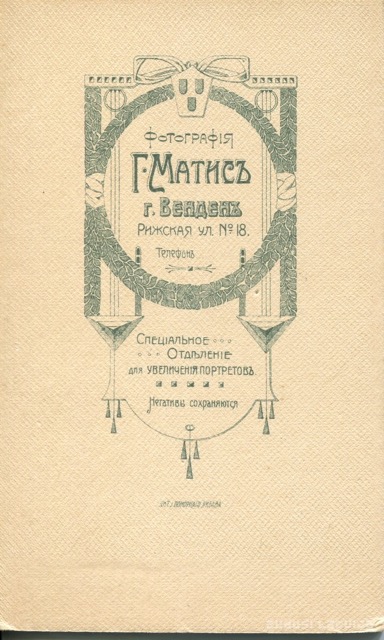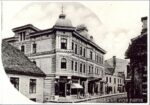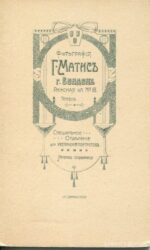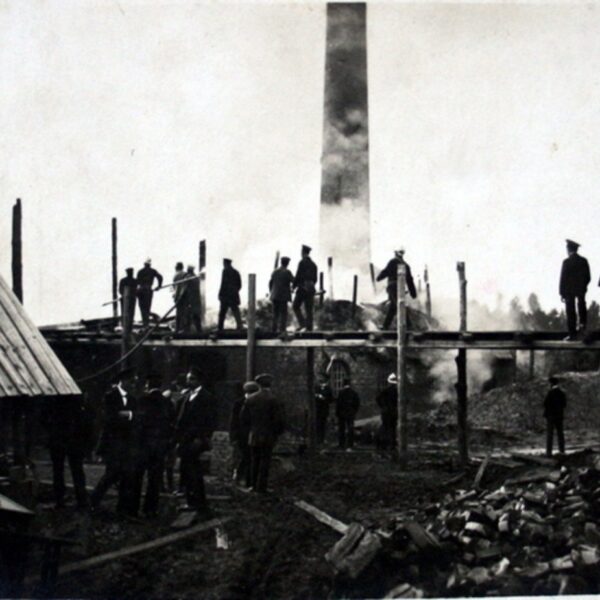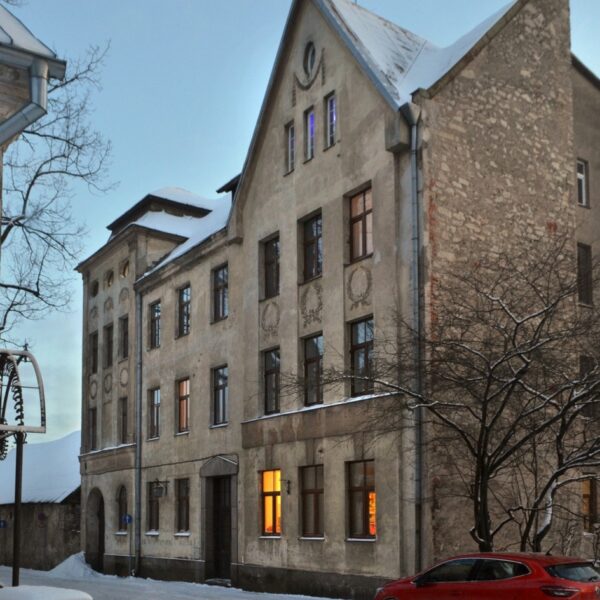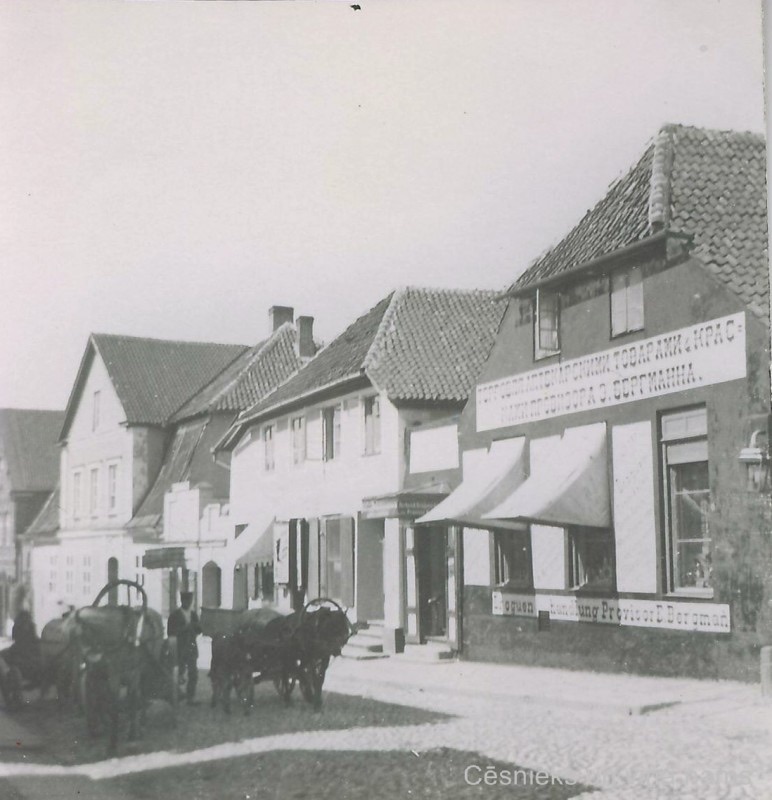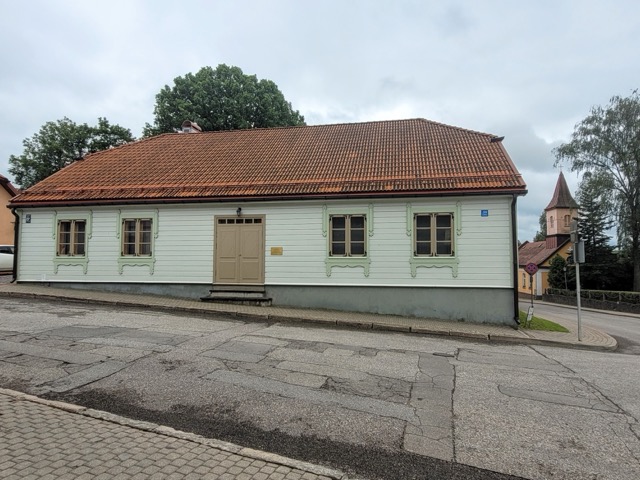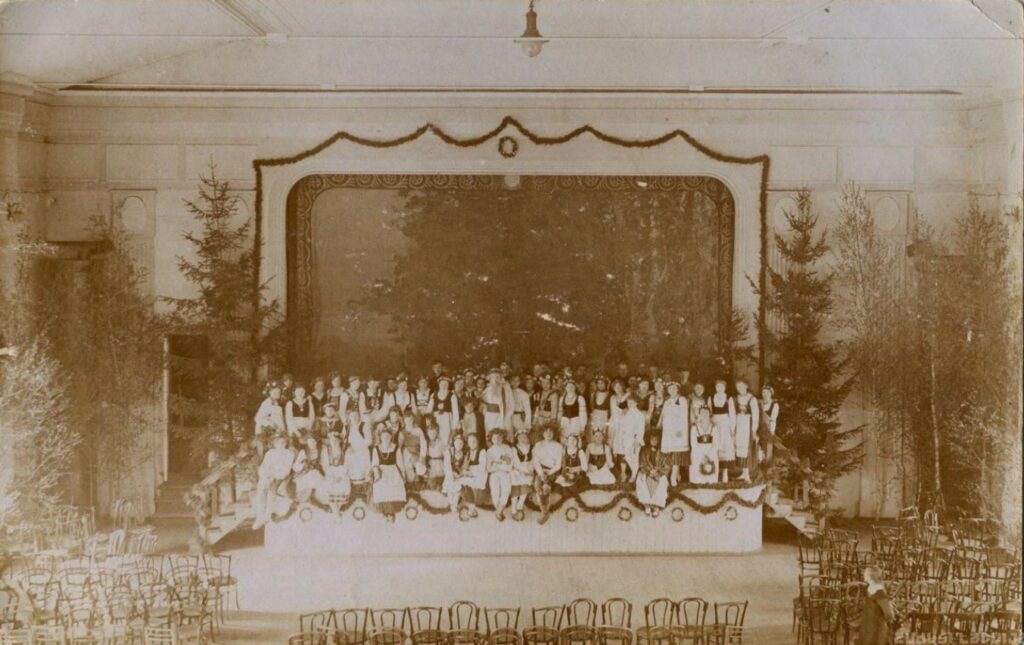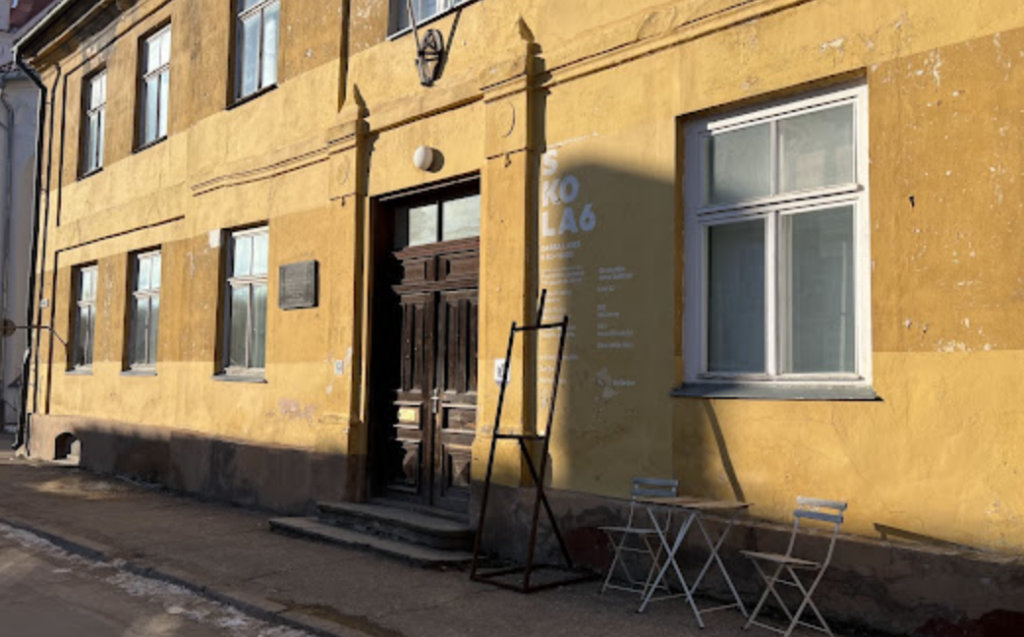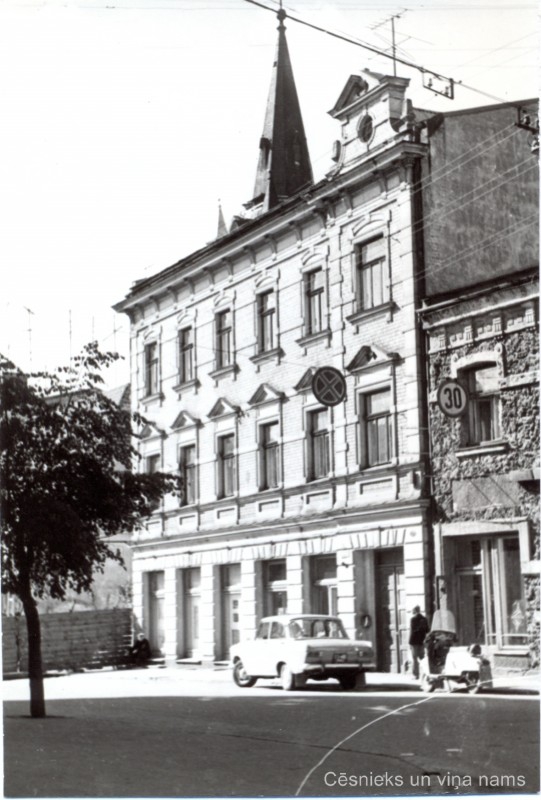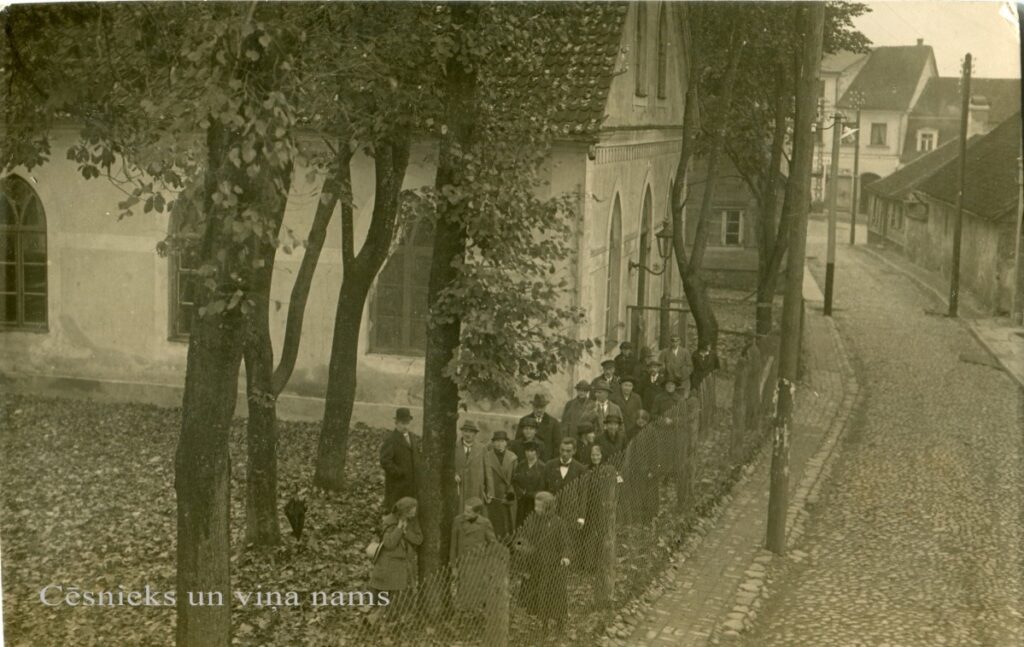The story of this building dates back to the second half of the 18th century, when Johann Adam Dralle, a carpenter and master hatter, bought a plot of land in 1775 and built a wooden dwelling house there. In the following years, the property changed hands several times: first it was bought by the master cabinetmaker Wilhelm Zimmerdahl, then by the master butcher Johann Zacharias Junker, and later by the baker Karl Gottfried Zacharias Junker and his wife Gottlieb Louise Junker.
The property went through various vicissitudes – it came into the hands of the miller Hristof Zilbert, Count Emanuel Sievers and the widow of the tinsmith, Julia Vogel. 1898. In 1899, by merging two plots of land, they were purchased from Count Sievers by the small townsman of Cesis, Ivan Hoppe, who built this majestic three-storey building the very next year – 1899. Cēsis residents nicknamed it the “Hoppe skyscraper” – one of the tallest buildings in the city at the time.
Although the construction of the house cost a considerable amount of money, only 11 years later Hoppe was forced to sell the property to the Cēsis Mutual Credit Society because of debts. Ironically, he did not receive a single penny for his house, as all 40 000 roubles were used to cover his debts.
The third floor of the building has always been particularly important in the cultural history of Cesis. 1901. In 1908, the photographer Ludvig Borewitz (1875-1913) set up his photographic studio here, with an entrance from Baznīcas Street, and worked there until 1908. The glass-walled photographic salon was located in the L. Skolas Street. In his advertisements, Borevics gave a romantic address – “Ludw. Borewitz at St. John’s Church”, accompanied by an elegant French sign – vis-à-vis (opposite) the church.
After Borevics moved to his own house at 36 Rīgas iela, the photographer Gotlībs Matīss (1878-1944), who had previously worked for three years in the studio of the photographer K. Andersons (5a L. Kalēja iela), started working in the studio in 1912. Matīss was a creative advertiser, inviting people to decorate their homes not with “insignificant market pictures” but with “precious mementos” – family photographs. During the Great Depression, Matīss adapted to the circumstances by reducing the prices of photographs for schoolchildren and soldiers by 10%, as well as offering more cheaper photo enlargements.
In the early 1930s, the Cēsis Mutual Credit Society was facing insolvency, and in 1935 the house was taken over by the JSC “Latvijas Kredītbanka”, which in 1938 sold it to married couple Pēteris and Elza Bergis for 55 000 lats. Pēteris Bergs opened a large shop in his house, offering colonial items, crockery, photography, bicycles and sporting goods to the people of Cēsis.
Unfortunately, the occupation of Latvia in 1940 brought tragic changes – the Berg family property was nationalised, and they were arrested and deported on 14 June 1941. Pēteris Bergs died in prison on 21 July 1941, and Elza – in 1947 in exile in Krasnoyarsk region.
A tragic fate also befell the photographer Gotlībs Matīss, who was in the glass salon of his photographic studio on 14 September 1944 when debris from an aerial bomb dropped by a Soviet aircraft broke through the roof of the church and, presumably, shattered the glass wall of the studio, severely injuring the photographer. Matīss died the same day in a hospital in Cēsis.
During the Soviet era, the ground floor of the building was occupied for a long time by the Utilities Trust, and later by the Women’s and Men’s Hairdressing Salon of the Household Services Combine. The premises were preserved from the late 1920s, when hairdresser Eduards Zvirbulis, who had also learned his skills in Germany, worked here.
Today, the iron pillars that were once used to stand on and clean the large glass windows of the photo salon can still be seen embedded in the wall of the building. These details are silent witnesses to history and, for those who know how to observe, narrators of the daily life of the photographic masters who once worked here.
The materials used for the description are:
Dace Cepurīte, Mg. hist., Research “Cēsnieks un jeho nams”
Collections of Cēsis Castle Museum
Latvian National Digital Library Letonica project“Zudusī Latvija”.

